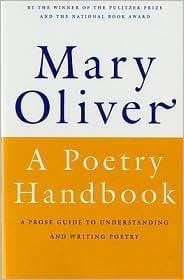Unlocking Verse: An 800-Word Guide to Mary Oliver’s “A Poetry Handbook”
Discover why Mary Oliver’s “A Poetry Handbook” remains an essential, reader-friendly guide to writing and appreciating poetry.

Introduction: Why “A Poetry Handbook” Still Matters
More than two decades after its first release, Mary Oliver’s “A Poetry Handbook” remains an indispensable companion for anyone who wants to craft, critique, or simply savor poems. In fewer than 150 pages, the Pulitzer-prize winning poet unwraps the mysteries of meter, image, and revision with a warmth that feels like a personal workshop. This article distills the handbook’s most useful insights, showing how Oliver’s guidance can energize beginners while deepening the practice of seasoned writers.
Meet the Author: Mary Oliver’s Gift for Clarity
Mary Oliver (1935–2019) wrote poems celebrated for their luminous observation of the natural world. Works like “American Primitive” and “Devotions” earned her both critical acclaim and a devoted readership. When Oliver turned to prose instruction, she carried the same clear-eyed attentiveness into the classroom. “A Poetry Handbook,” first published in 1994, is conversational yet exacting, proof that a great poet can also be a great teacher.
Structure of the Handbook
Oliver arranges the book in concise chapters, each focusing on a craft element: sound, line, form, diction, imagery, and revision. Interwoven throughout are short writing exercises, reading lists, and generous quotations from canonical poets. The structure invites the reader to pause and practice, transforming passive reading into active learning.
The Music of Words: Sound and Meter
Oliver opens with the building blocks of sound: vowels, consonants, and the “little drum” of line length. She demystifies scansion—marking stressed and unstressed syllables—by framing it as a tool, not a tyrant. According to Oliver, understanding meter is like learning musical scales; once mastered, a poet can improvise confidently. She encourages experimenting with iambic pentameter, trochees, anapests, and dactyls to discover a personal rhythmic fingerprint.
Practical Tip
Read poems aloud in a whisper, Oliver advises, because the ear catches subtleties the eye skips. Record yourself and listen back; where the rhythm falters, revision is likely needed.
The Image: Seeing and Saying
In Oliver’s universe, imagery is not decorative but foundational. She urges writers to “pay attention to the world,” collecting sensory details before hunting for meaning. Concrete nouns and active verbs, she explains, anchor a poem so that its metaphors can take flight without losing the reader.
Practical Tip
Keep a field notebook. Jot down textures, colors, and smells encountered during daily walks. Later, treat the notebook as raw clay for drafting fresh metaphors.
Form and Freedom: From Sonnet to Free Verse
Oliver respects traditional forms—sonnets, villanelles, sestinas—yet celebrates the possibilities of free verse. She argues that form is not a cage but a “friendly dog leash” guiding energy. By analyzing examples from Shakespeare to Elizabeth Bishop, Oliver demonstrates how constraints can ignite surprising language. Her balanced approach empowers poets to choose form purposefully rather than by default.
The Art of Revision
Perhaps the book’s most liberating lesson is its stance on revision. Oliver likens rough drafts to “uncut stones.” Through re-reading, cutting, and rearranging, the poem’s true shape emerges. She suggests setting drafts aside for several days to gain distance, then returning with “merciless patience.” Students often fear revision as a sign of failure; Oliver reframes it as an act of respect for the poem’s potential.
Practical Tip
When revising, print the poem and use scissors to rearrange lines physically. Altering the visual layout can reveal new structural possibilities.
Exercises That Spark Creativity
Throughout the handbook, Oliver includes mini-assignments that feel neither tedious nor gimmicky. One classic exercise: write a poem entirely in iambic trimeter about an ordinary household object. Another: select a poem you admire, strip away its nouns, and replace them with your own. These tasks cultivate flexibility, teaching you to maneuver within and beyond given limits.
Who Should Read “A Poetry Handbook”?
Although marketed to beginners, the book offers value at every stage of a writer’s journey. Teachers will appreciate its clear definitions and ready-made exercises. Intermediate poets can refine technique, while advanced writers may rediscover basics they have unknowingly neglected. Even readers who never plan to publish will gain deeper pleasure from reading poetry after exploring Oliver’s explanations.
Using the Handbook in a Classroom or Workshop
Many instructors structure multi-week courses around the handbook’s chapters. Start with sound during week one, move to image and diction the next, and culminate with revision sessions. Pair each lesson with poems cited in the book—Hopkins, Dickinson, Auden—to show concepts in action. Encourage students to write reflective journal entries about how each craft element influences their creative decisions.
SEO Keywords to Remember
To help poetry educators and enthusiasts find this article, remember phrases like “Mary Oliver poetry guide,” “how to write poems beginner,” “poetry meter explained,” and “best poetry writing exercises.” Incorporating these high-search terms organically—without keyword stuffing—aligns your content with audience intent.
Final Thoughts: Carrying the Handbook Forward
Mary Oliver closes “A Poetry Handbook” with an invitation: “We need poetry because we need to know what it means to be human.” By decoding craft while honoring mystery, she equips readers to accept that invitation. Whether you draft your first haiku or revise a full collection, Oliver’s counsel stays at your elbow, gentle yet insisting, reminding you that attentiveness and labor are the twin engines of poetic art.
In an era of online distractions, the slim volume feels almost radical: a slow read that demands active engagement. Fortunately, what it demands it also rewards, offering clarity, confidence, and an enduring love of the written word. Place it on your desk beside your notebook and pen; reach for it whenever you need guidance, encouragement, or a nudge back to the blank page. “A Poetry Handbook” is more than a manual—it is, as Oliver intended, a mentor in print.



